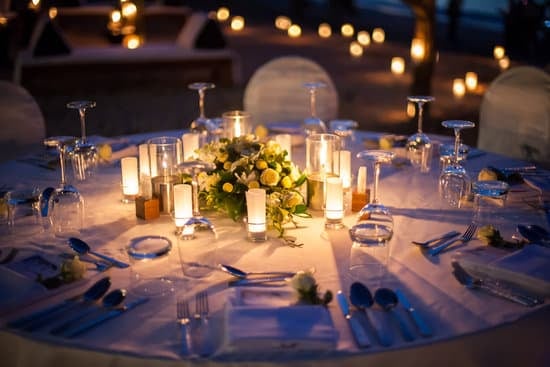How did the wedding ring tradition start? The exchange of wedding rings has long been a symbol of love and commitment in many cultures around the world. From ancient civilizations to modern trends, the tradition of wearing a wedding ring holds deep significance for couples. In this article, we will explore the historical origins, ancient evidence, evolution of styles, and cultural variations of wedding rings. We will also delve into the modern trends and contemporary interpretations of this timeless tradition.
The symbolism of wedding rings extends far beyond mere adornment. These small circular bands hold great sentimental value and represent the eternal bond between spouses. The significance of the wedding ring tradition is deeply rooted in history and has evolved over time to encompass a variety of cultural meanings.
As we embark on this exploration of the wedding ring tradition, we will uncover how this symbolic ritual has transcended time, geography, and societal changes to remain a cherished custom in weddings worldwide. Join us as we journey through the origins, evolution, and variations of this enduring tradition that continues to unite couples in love and commitment.
Historical Origins
The tradition of exchanging wedding rings has deep historical roots that have been traced back to ancient civilizations. The origins of the wedding ring tradition can be found in different cultures and have evolved over time, but the symbolism remains constant.
Ancient Egypt: The Early Evidence of Ring Exchange
One of the earliest pieces of evidence of the wedding ring tradition comes from ancient Egypt. It is believed that the ancient Egyptians were among the first to use rings as a symbol of love and commitment. They would exchange rings made from materials such as reeds or leather, signifying an eternal and unbroken bond between the couple.
Roman Empire: The Evolution of Wedding Ring Styles
The tradition of wearing wedding rings on the fourth finger of the left hand also has its roots in ancient Rome. The Romans believed that this finger contained a vein that led directly to the heart, which they called “vena amoris,” meaning “vein of love.” This belief led to the practice of wearing wedding rings on this particular finger, a tradition that continues to this day in many cultures.
The Significance of Symbolism
Throughout history, circular shapes have held symbolic significance, representing eternity and infinity. This is why wedding rings are traditionally circular in shape, representing an unending bond and everlasting love between spouses. The use of precious metals such as gold or silver further emphasizes the value and permanence of the commitment made through marriage.
Understanding the historical origins and symbolic significance behind wedding rings provides a deeper appreciation for this timeless tradition that continues to be cherished by couples around the world.
Ancient Civilizations
The tradition of giving and wearing wedding rings dates back to ancient times, with evidence of ring exchange rituals found in several early civilizations. One of the earliest known examples of wedding rings comes from ancient Egypt, where rings made of braided hemp or reeds were exchanged as a symbol of eternity and the unending love between a couple.
These early rings were often worn on the fourth finger of the left hand, as it was believed that this finger contained a vein connected directly to the heart, a tradition still followed by many today.
In ancient Rome, wedding rings were typically made from iron and symbolized strength and permanence. The use of gold rings became more common over time, with the metal representing wealth and social status. It wasn’t until later that diamond engagement rings became popular, a trend that continues to be associated with engagements and weddings in modern times.
The exchange of wedding rings was also prevalent in ancient Greece, where they were seen as a public symbol of the couple’s commitment to each other. These early examples provide insight into how the wedding ring tradition evolved over centuries and across different cultures, demonstrating its enduring significance in human relationships.
| Evidence Found | Symbolism |
|---|---|
| Ancient Egyptian Rings made of braided hemp or reeds | Symbolize eternity and unending love |
| Ancient Roman Rings made from iron | Symbolize strength and permanence |
| Ancient Greek Rings used as public symbol | Demonstrate commitment to each other |
The Evolution of Wedding Ring Styles
Throughout history, wedding ring styles have varied in material, design, and symbolism. Here are some key developments in the evolution of wedding ring styles:
- Ancient Times: In ancient Egypt, wedding rings were typically made of reeds or hemp and worn on the fourth finger of the left hand because it was believed that a vein from that finger led directly to the heart.
- Medieval Europe: During the Middle Ages, posy rings engraved with romantic poems or messages became popular among European couples as a symbol of their love and commitment.
- Victorian Era: The Victorians favored ornate designs and intricate details for their wedding rings, often incorporating symbolic motifs such as hearts, flowers, and clasped hands.
As time passed and cultures intermingled, wedding ring styles continued to evolve to reflect changing aesthetics and trends. Today, couples have a wide array of options when it comes to choosing their wedding rings, from traditional gold bands to modern designs crafted from alternative metals like titanium or platinum.
How Did Wedding Ring Styles Change Over Time?
The evolution of wedding ring styles can be attributed to various factors such as advancements in metallurgy, changes in fashion trends, and shifts in cultural values surrounding marriage and commitment. As society continues to evolve, so too will the styles and meanings associated with these timeless symbols of love and unity.
Ultimately, regardless of the specific style or design chosen by a couple, the tradition of exchanging rings remains a powerful symbol of their enduring love and commitment to one another.
The Significance of the Circular Shape
The circular shape of a wedding ring holds great significance and meaning in the tradition of ring exchange. This shape has been a symbol of eternity and everlasting love since ancient times, making it the perfect representation of a marriage bond.
The unending circle signifies the eternal commitment between two individuals, as there is no beginning or end to a circle. This enduring symbolism has stood the test of time and continues to be an essential aspect of the wedding ring tradition.
In ancient Egypt, people exchanged rings made from materials such as reeds and hemp. These early rings were worn on the fourth finger of the left hand, as it was believed that this finger contained a vein that led directly to the heart, known as the “vena amoris” or the “vein of love.” This practice laid the foundation for the tradition of wearing wedding rings on this particular finger, which is still observed in many cultures today.
As for the circular shape itself, it represents not only eternity but also unity and wholeness. The absence of any sharp edges or angles symbolizes the seamless and continuous bond between two individuals in marriage. Additionally, the circular shape also reflects the idea of protection and enclosure, signifying that spouses are each other’s safe haven and source of comfort.
Overall, understanding why wedding rings are traditionally circular provides insight into their profound significance beyond mere adornment. The enduring symbolism behind this shape underscores the timeless nature of love and commitment in marriage.
| Significance | Mention |
|---|---|
| Eternity | Ancient Egypt rings were made from materials such as reeds and hemp |
| Unity | Circular shape represents unity and wholeness |
| Protection | The absence fo sharp edges or angles symbolizes protection and enclosure |
Cultural Variations
Wedding ring traditions vary greatly from one culture to another, each with its own unique customs and symbolism. Here are some examples of different wedding ring traditions around the world:
1. Jewish Tradition:
In Jewish tradition, the wedding ring is incredibly significant as it symbolizes the unbroken circle of love and commitment. According to Jewish law, the wedding ring must be a plain gold band without any engravings or gemstones. This simplicity represents the pure and unadulterated love between the couple.
2. Indian Tradition:
In India, wedding rings are not always exchanged during the ceremony. Instead, a toe ring called “bichiya” may be used to symbolize a married woman. This toe ring is usually made of silver and worn on the second toe of both feet, signifying her marital status.
3. Irish Tradition:
The Claddagh ring is a traditional Irish symbol of love and loyalty that has been popular for centuries as both a friendship or wedding band in Ireland. The design consists of two hands holding a heart topped with a crown, representing love (the heart), friendship (the hands), and loyalty (the crown).
These examples demonstrate just how diverse wedding ring traditions can be across different cultures around the world.
Modern Trends
In the modern era, the wedding ring tradition has evolved to include contemporary interpretations that reflect the personal style and values of the couple. From unique designs to alternative materials, modern trends in wedding ring choices continue to evolve while preserving the timeless symbolism of commitment and love.
Unique Designs
One modern trend in wedding rings is the rise of unique and non-traditional designs. Couples are moving away from classic plain bands and opting for rings with intricate engravings, personalized details, or unconventional shapes. Some may choose matching sets with coordinating designs, while others prefer individualized rings that showcase their individual personalities.
Alternative Materials
Another contemporary interpretation of the wedding ring tradition involves the use of alternative materials. While gold and platinum remain popular choices, many couples are now exploring options such as titanium, rose gold, or even wood for a more unique and eco-friendly option. These alternative materials not only offer a distinctive look but also align with sustainability and ethical sourcing practices.
Personalization
In today’s wedding ring market, personalization is key. Many couples are choosing to engrave meaningful dates, initials, or symbols onto their rings as a way to further personalize their commitment. This trend allows for a deeper connection to the symbolism of the rings and serves as a constant reminder of their love and dedication to each other.
As modern trends continue to influence the wedding ring tradition, it’s clear that couples are reimagining this age-old symbol in ways that align with their values and preferences. These contemporary interpretations honor the past while embracing individuality, making the exchange of wedding rings an even more meaningful and personal experience for couples around the world.
Conclusion
In conclusion, the tradition of exchanging wedding rings is a time-honored ritual that has transcended centuries and cultures. From its historical origins in ancient civilizations to the modern trends and variations around the world, wedding rings continue to symbolize the eternal bond between two people in love. The circular shape of the ring represents infinity and unending love, making it a powerful emblem of commitment and devotion.
As we have traced back the origins of the wedding ring tradition, it becomes clear that this custom has deep-rooted significance that goes beyond just a piece of jewelry. The exchange of rings during a wedding ceremony is a universal symbol of love, unity, and fidelity. Regardless of cultural variations and evolving styles, the timeless symbolism of wedding rings remains unchanged.
In today’s contemporary society, couples have embraced modern trends and interpretations in their choice of wedding rings. Whether it be personalized engravings, unique designs, or alternative materials, the essence of the tradition still holds true. As we continue to honor this timeless symbolism in our modern day weddings, it is evident that the tradition of exchanging wedding rings will continue to endure for generations to come.
Frequently Asked Questions
Who Started the Engagement Ring Tradition?
The tradition of giving engagement rings is said to date back to ancient Rome, where the ring symbolized a contract or agreement between the betrothed. However, it was popularized by Archduke Maximilian of Austria in 1477 when he gave a diamond ring to Mary of Burgundy.
Where Did the Tradition of Wedding Rings Come From?
The tradition of wedding rings can be traced back to ancient Egypt, where couples exchanged rings made from reeds and hemp as a symbol of eternity. The circular shape signified never-ending love, making it an enduring symbol of marriage through the ages.
Why Was the Left Hand Chosen to Wear a Wedding Ring?
The choice of the left hand to wear a wedding ring has its roots in ancient beliefs about anatomy and spirituality. In ancient Egyptian and Roman cultures, it was believed that the vein in the fourth finger on the left hand led directly to the heart, making it the “vena amoris” or “vein of love.”
This romantic notion led to the tradition of wearing wedding rings on this finger.

I have been involved in marriages for over 20 years helping couples and singles understand more about them.





